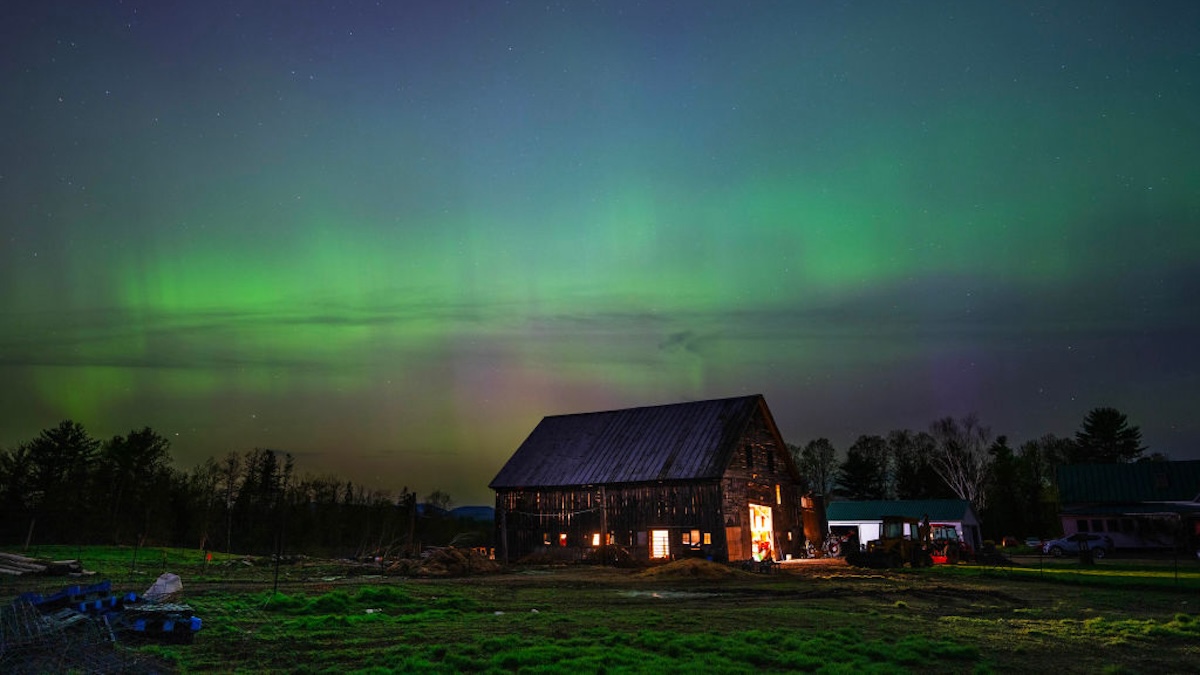What Caused the Weekend’s Major Aurora Borealis Phenomenon?

The aurora borealis, commonly called the northern lights, appeared in the skies over the weekend in locations where it normally isn’t visible, which has left some viewers wondering what exactly caused such an event.
People in the Netherlands, Italy, Mexico, the United States, Britain, New Zealand, China, and even more countries stepped out into the night to see the aurora borealis with eye and camera from May 8–10, 2024. Thousands of images appeared all over social media, from X (formerly Twitter) to Instagram, just taken in people’s backyards or from their porch. Timelapse images seemed to work the best, to allow smartphone cameras to capture the subtlety of the lights in places where the naked eye can’t see the northern lights.
For several nights in a row, chatter about how to get the best picture and see the aurora borealis from home filled social media feeds. But what caused this phenomenon?
A level 4 geomagnetic storm
On Friday afternoon, the Space Weather Prediction Center, a part of the National Weather service, predicted that Earth would experience a level four geomagnetic storm. This is considered a severe geomagnetic storm by the SWPC, and previous level four storms have been known to take down power grids. Currently, the Sun is near the peak of its 11-year cycle’s activity, and larger solar flares occur more often, with greater reach, at this peak. But electrical grid problems are not the only effect that a solar flare can have on Earth.
Solar flares can also cause auroral activity. Solar disturbances in Earth’s atmosphere have been known to cause auroras before on both of Earth’s poles. Both the aurora borealis, the northern lights, and the aurora australis, the southern lights, are results of solar activity, and increases in that activity can increase the visibility of the phenomena.
High-frequency active auroral research program testing
There are some conspiracy theorists on X (formerly Twitter) who said they believed this was HAARP testing. What is HAARP? Near Fairbanks, Alaska, there is a scientific research center focused on studying Earth’s ionosphere, called the Subauroral Geophysical Observatory for Space Physics and Radio Science. One of their programs is HAARP, or the High-frequency Active Auroral Research Program. HAARP does conduct research that involves sending radiating waves of various kinds into Earth’s ionosphere, which can create a glow similar to the auroras.
According to their website, they have some pretty powerful instruments. On their FAQ page, it says, “The High-frequency Active Auroral Research Program (HAARP) is the world’s most capable high-power, high frequency (HF) transmitter for study of the ionosphere. The principal instrument is the Ionospheric Research Instrument (IRI), a phased array of 180 HF crossed-dipole antennas spread across 33 acres and capable of radiating 3.6 megawatts into the upper atmosphere and ionosphere.”
However, it’s unlikely this was the cause of the phenomenon over the weekend. Late last year, HAARP put out an announcement that their equipment may cause a glow in the sky for a few days during an experiment at that time, but it was much more limited, in size and intensity, than the extensive aurora visibility in the weekend’s event—only visible for a few hundred miles, and fairly faint. There’s no reason to believe the major shift in aurora visibility for such a wide portion of the world was anything other than a well known natural phenomenon due to the activity of the Sun.
Have a tip we should know? [email protected]